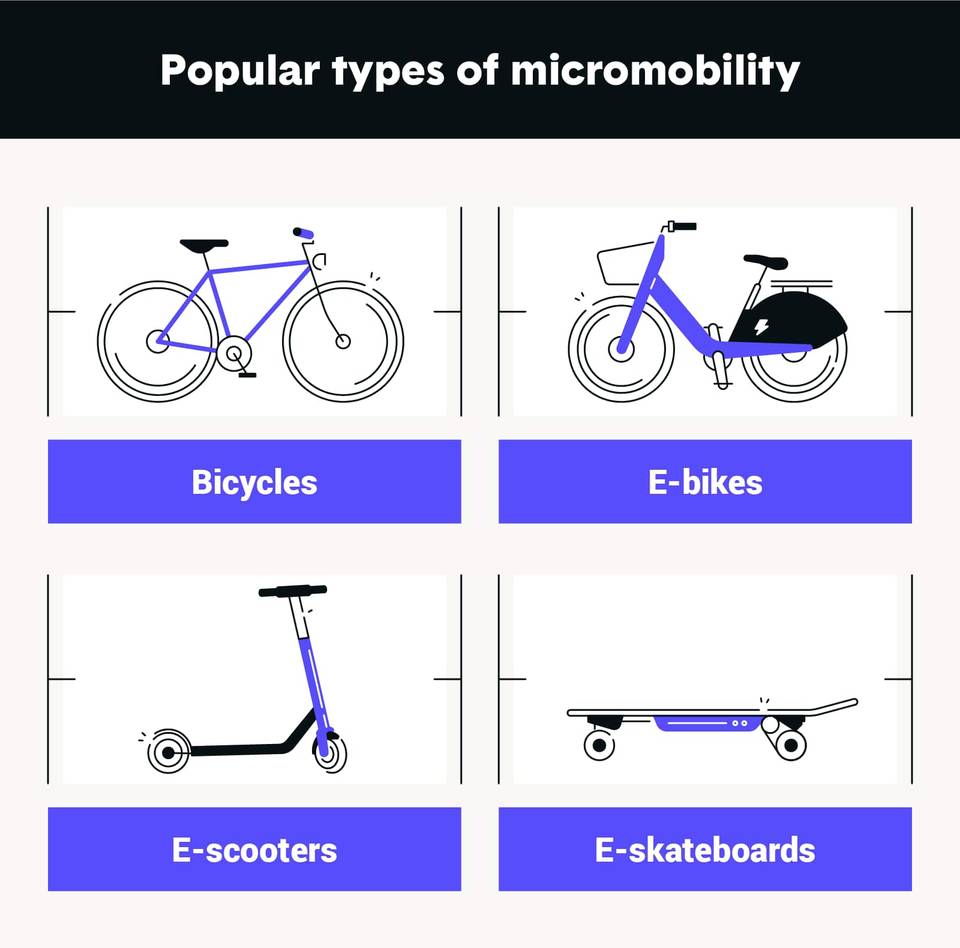How infrastructure can enhance micromobility
Forward-thinking cities will develop micromobility paths and more protected lanes to allow riders to safely use alternative transportation. Here are some of the ways infrastructure can be optimized for micromobility:
More protected bike lanes
Data tells us that more people would bike to work if they felt safe doing so. Protected bike lanes designed specifically for bicycles help increase safety on city streets and have been doing so for years. Demand for more of these lanes is on the rise as micromobility travel is up — one bike trail in Philadelphia saw a 417% increase in use during COVID-19.
Protected bike lanes also permit other low speed vehicles, such as skateboards, a car-free lane to ride on. In turn, these protected lanes give sidewalks back to pedestrians.
Cycle superhighways
Beyond protected bike lanes, bike freeways enable commuters to ride bicycles at higher speeds without streetlights or vehicle congestion. They’re essentially bike paths designed for longer distances to make commuting easier and safer for bikers.
This infrastructure is already popular in notable bike-friendly European cities such as Copenhagen and London. As more Americans opt for micromobile travel, expect to see more of this infrastructure.
Car-free streateries
COVID-19 has brought the rise of car-free “streateries” to America. Roads near local restaurant and shopping districts have been closed off to car travel in order to expand outdoor dining space and give more room for social distancing.
These areas also promotes micromobility transportation, which enables visitors to get closer to their destination than if they traveled by car. Micromobility also helps prevent them from getting stuck in gridlock traffic or searching for parking.
Data-sharing platforms
The rise of app-based micromobility has also generated a lot of real-time data. Cities that collect and analyze the numbers can manage fleet numbers, identify service gaps and get a handle on parking issues associated with e-scooters, e-bikes and more.
This data also helps fill in gaps over how micromobility is being used, and in which neighborhoods. Do low income communities have access? Is micromobility being used to complete first/last mile trips to and from public transit stops?
Geofenced “no-go” areas
Geofencing allows cities to control where shared e-scooters and bikes are able to ride. Some California cities have already seen success blocking shared mobility from “no-go” areas, such as Beverly Hills. The technology disables or slows down the device once it enters a prohibited area, enforcing city ordinances and protecting popular pedestrian areas.






